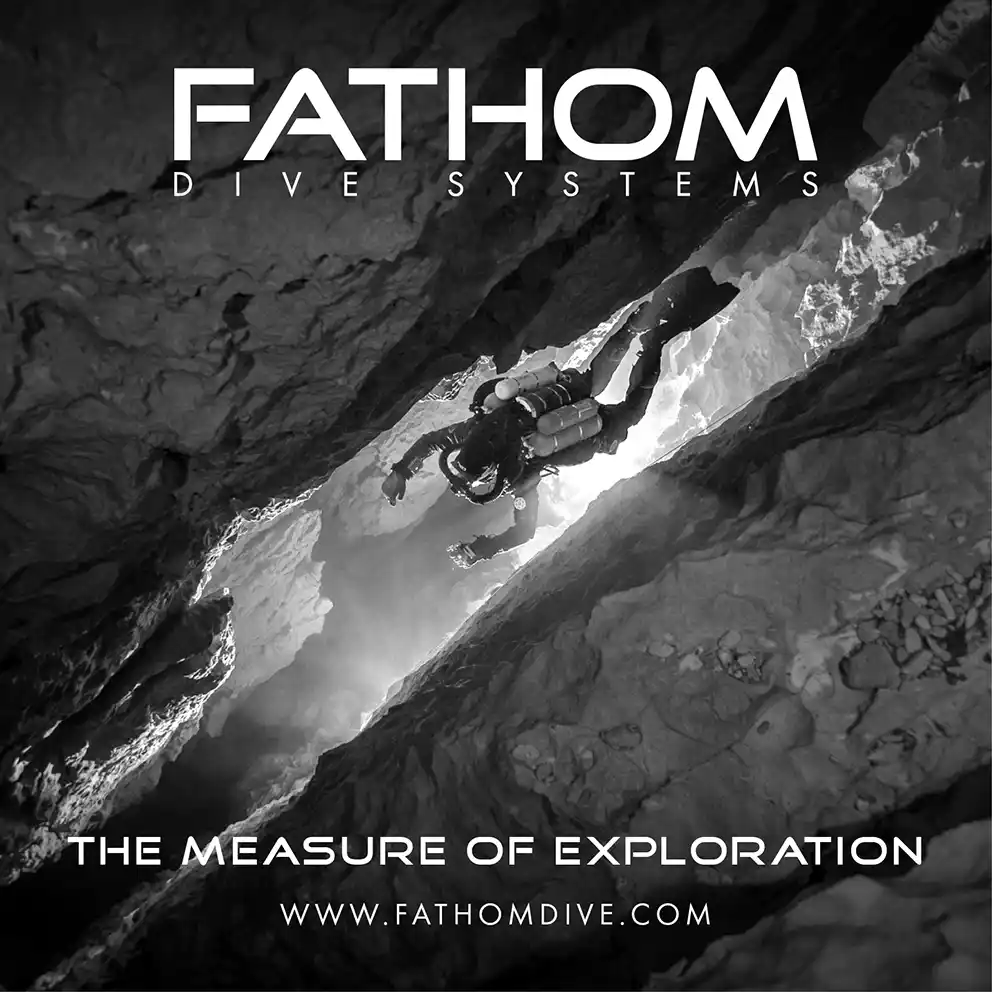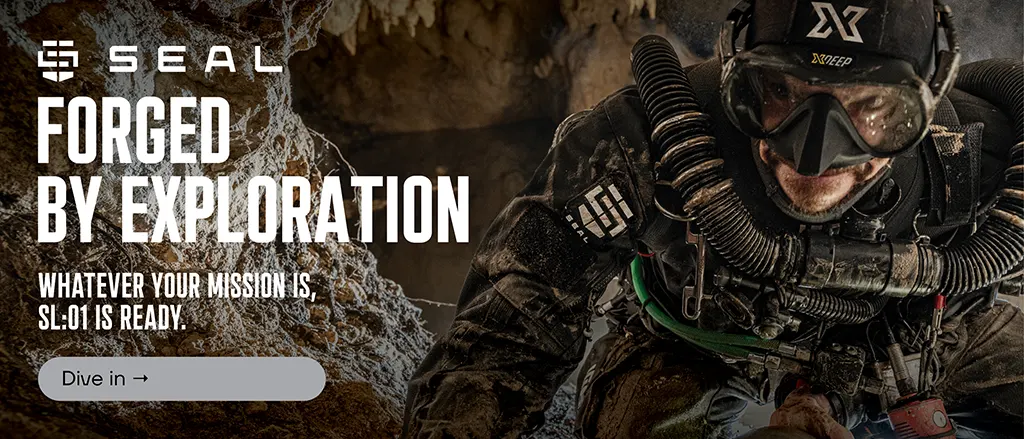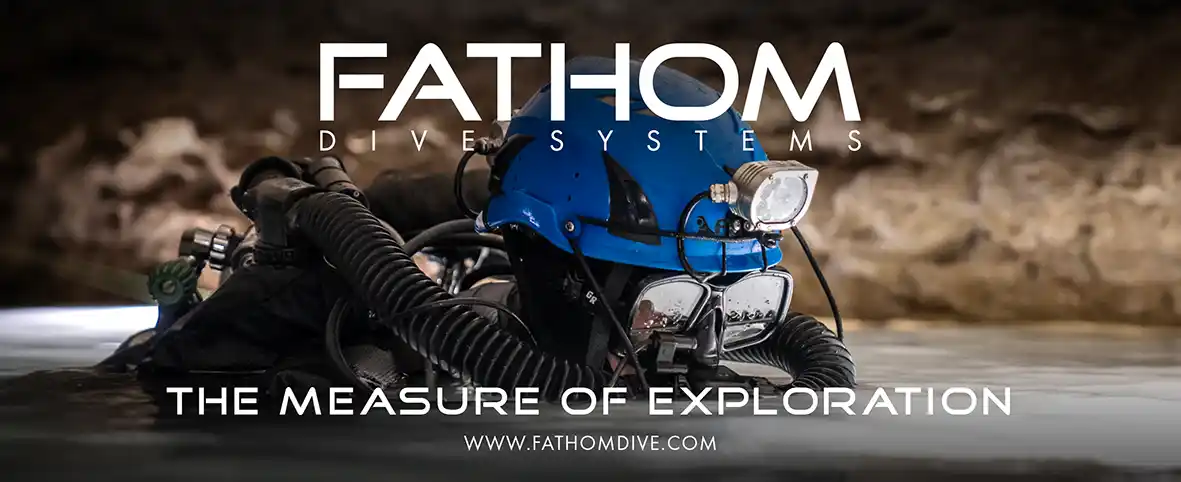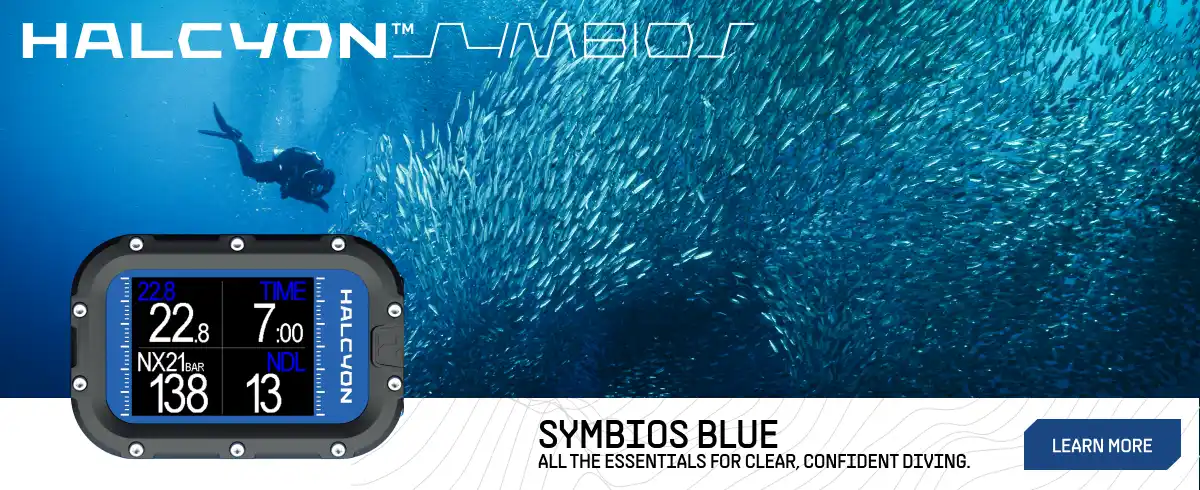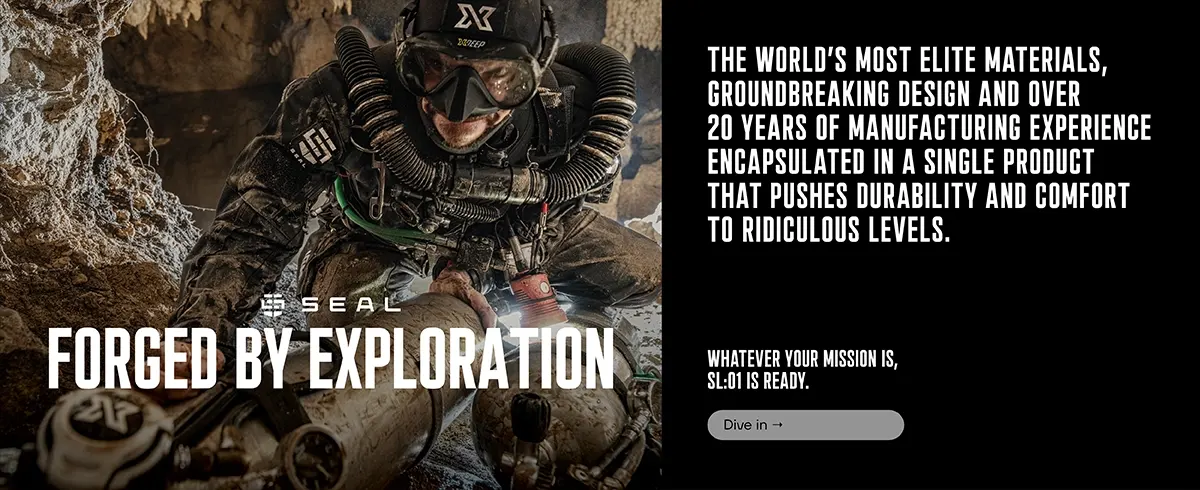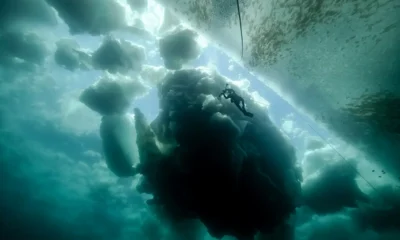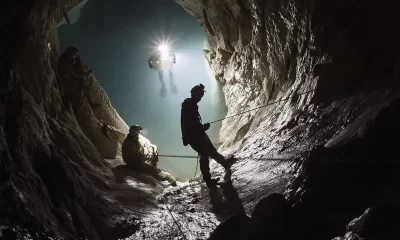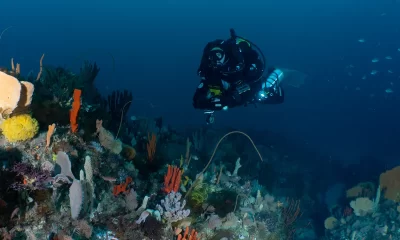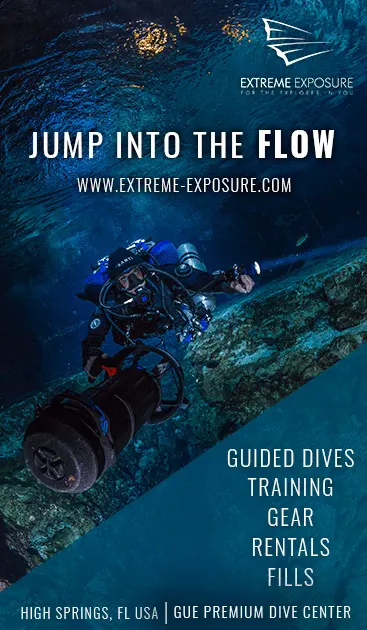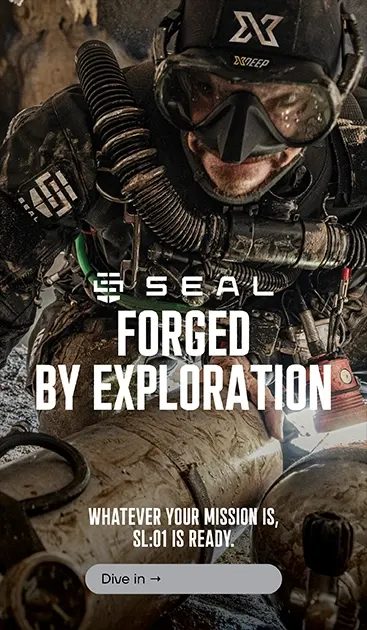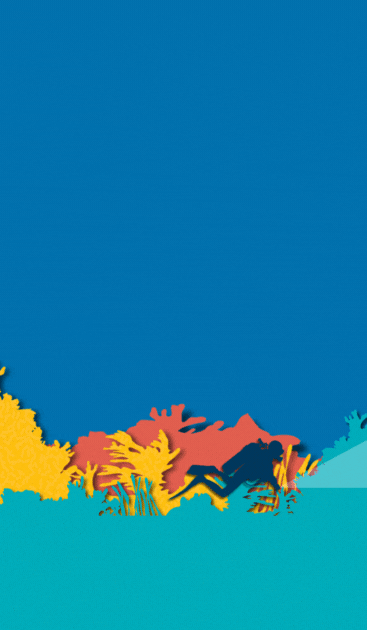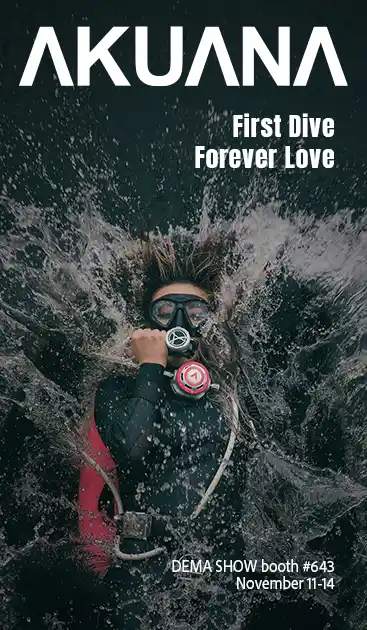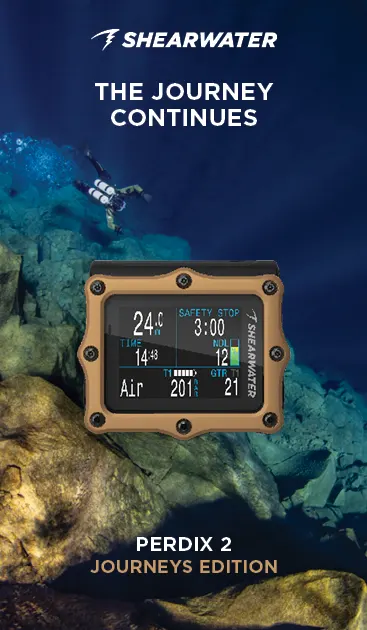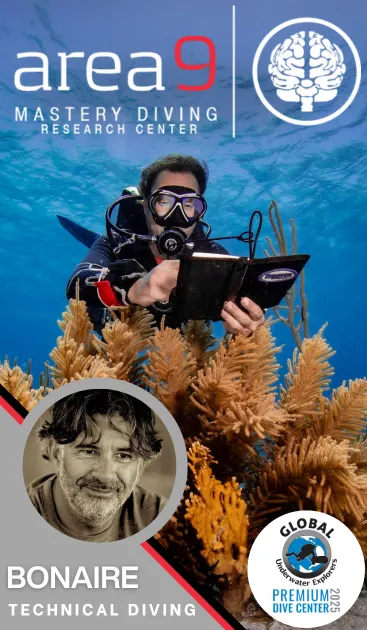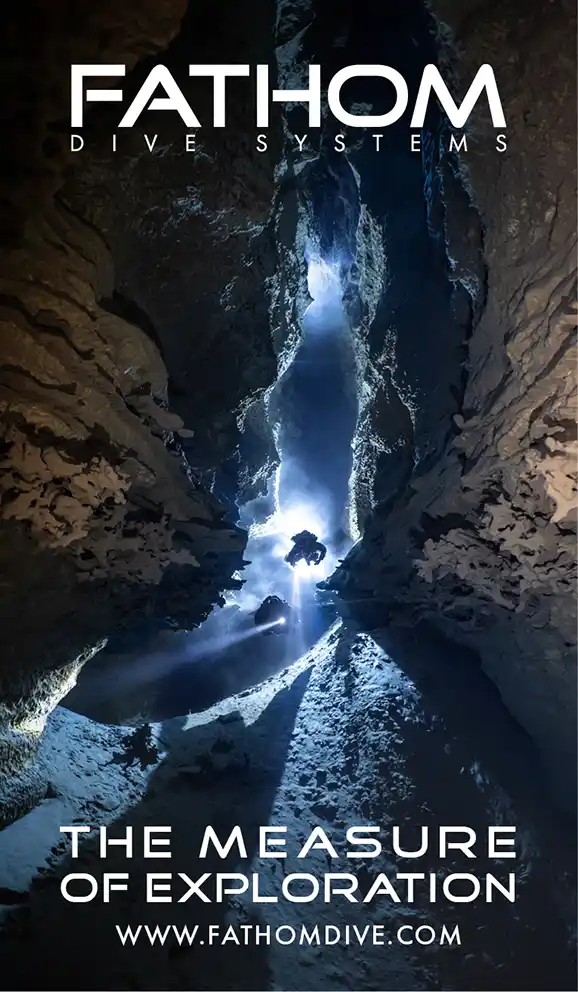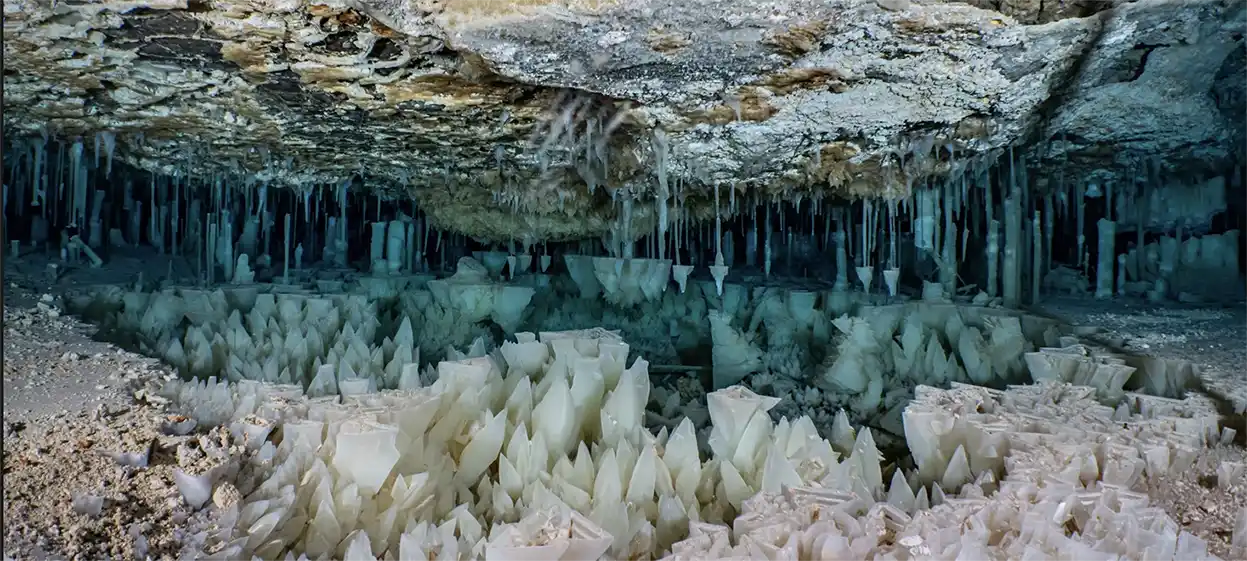

Art
Beyond the Diver: Rethinking Cave Photography
What happens when a photographer decides the cave—not the diver—is the star of the shot? Laurent Miroult’s images may change the way you look at cave diving.
Photos by Laurent Miroult
Lead image: delicate crystal formations stretch like glass chandeliers inside the Glass Factory chamber of Ralph’s Cave, Abaco Island
NOTE: One lucky InDEPTH reader will receive a fine art print by Laurent Miroult — signed and numbered. The giveaway winner will be announced at the end of October. Available exclusively to subscribers: SUBSCRIBE FOR FREE
Among cave divers, photographs often place a diver at the center: a silhouette framed by a tunnel, a figure illuminated against rock. Laurent Miroult’s fascinating work, however, takes a different path. Here, he explains his process: “For me, the cave itself is the subject. Divers appear only when they help create scale, perspective, or depth—often reduced to silhouettes against vast formations. I’ve always felt that restraint gives my photographs a clarity and sense of purpose that resonate with those who love caves as much as I do.“
Miroult is a Belgian radiologist by profession, but his true passion lies underwater. For him, what began as simple documentation of dives gradually evolved into a deeply personal photographic voice: “I’ve been diving since 1996, and cave diving has been my focus since 2014. Photography came to me almost by accident. On a trip to Norway, I met underwater photographers who encouraged me to go beyond my GoPro and explore the creative potential of a full system.”
“The learning curve was steep, but I embraced it step by step: practicing on land in manual mode, then in open water, and finally in caves. With the early support of my instructor and now close friend, Rob Neto, I gained confidence, upgraded my equipment, and began sharing my images.”

As a matter of fact, Miroult’s fascination with caves had actually begun even earlier in his life. Having dived only occasionally as a child, everything changed in northwest Florida when he descended into a spring and found a cavern at its base: “I was completely blown away by its beauty. From that very moment, the focus of my diving turned entirely toward caves.“
“For me, the appeal has never been about adrenaline—it’s about aesthetics: water revealing rock in its purest form—clean, shaped, polished by time.”



That perspective guides his photographs. He wouldn’t admit to having a “signature style,” but his approach is consistent: “Light is everything. It can reveal or conceal details, shift colors, create atmosphere, even change how a cave feels. I often work with strobes placed off-camera by trusted dive buddies, using light to carve depth, highlight formations, and suggest scale.“
“By keeping divers small in the frame, I try to emphasize the immensity of the cave—the environment itself—rather than the individual exploring it.”



“On a personal level, my photographs are a way to revisit extraordinary dives and to bring back some of the light from the darkness of caves.”

Travel has widened Miroult’s vision from the cold, dark waters of Scandinavia to the luminous passages of the Bahamas. He claims that he doesn’t choose favorites, and yet he easily affirms that each cave has its own personality: “Some are generous, others demand patience. I’m especially drawn to semi-dry sections; though harder to reach, they offer unusual perspectives that stay with me long after the dive is over.”


When it comes to equipment, he stays practical and mostly works with Sony A7RIII and A7IV bodies, paired with a 28 mm lens and Nauticam WWL-1 wet lens. His lighting is built around Inon Z-330 strobes, sometimes supported by smaller off-camera units: “I always shoot in manual mode, balancing aperture, ISO, and shutter speed to the cave’s conditions, then I refine the images in Lightroom. My goal is to keep them as natural and faithful as possible to what I see underwater.”


Even though Miroult remains a hobbyist, he is aware of the challenges of turning cave photography into a profession: the costs of equipment, the training required, and the lack of guaranteed recognition are all factors.
“My advice to anyone starting is simple—invest in solid gear from the beginning, experiment widely, and above all, never lose the joy of diving. Always dive first for yourself.”

Photography, for Miroult, is ultimately about sharing: “I hope my images inspire other divers to explore caves and that those images will also remind non-divers of the fragility of cave systems. I’m mindful of the risks of exposure—too much attention can sometimes lead to restrictions—but I also believe in fostering appreciation. “


Top 5 Caves to Photograph
Over the years I’ve had the chance to dive and photograph in many extraordinary places, but these five caves stand out as the ones that inspire me most:
- Jackson Blue Springs, Florida, USA
The water’s incredible clarity, the ethereal blue tones near the spring vent, and the contrast between submerged passages and light entering make it a dream for underwater photography. - Grotte de Marchepied (Sump 3), Lot, France
“Marchepied” in the Lot region. Sump 3 in particular offers superb visibility and light. The delicate features, narrow passages, shafts of light, and rock textures make this cave especially photogenic. - Litjåga (Litjaga) Cave, Norway
Located near Dunderland in northern Norway, Litjåga has fantastic colours and pristine, clear water. The mixture of marble formations, layered stone, dramatic lighting, and winter scenery (snow, frozen hues) add atmosphere and strong visual contrasts. - Ralph’s Cave – “Glass Factory”, Abaco Islands, Bahamas
Part of the Crystal Caves on Abaco. The “Glass Factory” room is one of the most ornate rooms you’ll find: soda-straw formations, crystal roses, translucent draperies, crystal pools, extremely delicate speleothems. Very fragile so photographing here requires care and excellent buoyancy. - Cenote 1 KM, Cozumel, Mexico
A cenote on Cozumel Island, with haloclines that produce greenish/blue glows, varied formations inside, and pristine, undisturbed spaces which are excellent for capturing subtle textures and geological detail. The light interplay through haloclines is particularly rewarding.
Equipment List
The right tools make all the difference in capturing the fragile beauty of caves. Here’s the gear I trust on my dives:
Drysuits by Ursuit, SF-Tech, Santi, Seac
Regs: Aqualung, Apex and Scubapro
Camera: Sony A7RII, A7RIII and A7IV
Housings: Nauticam
Enjoyed this read? Here are more stories that tie into it.
DIVE DEEPER
InDEPTH: A Voice In The Wilderness by SJ Alice Bennett
InDEPTH: THE TALKS: The Art & Practice of Cave Photography by Stratis Kas (2024)
InDEPTH: What Does It Cost to Become a Professional Cave Photographer? by Fan Ping
InDEPTH: Rainbow Caves by Joram Mennes (2023)
Alert Diver (DAN): Cave Photography by Liz Rogers (2012)

Laurent Miroult is a Belgian radiologist and experienced diver who has been exploring underwater worlds since 1996, with a particular focus on cave diving since 2014. Passionate about underwater photography, he dedicates much of his work to capturing stunning images of submerged caves across the globe. You can discover more of his work on his website or follow him on Facebook.

